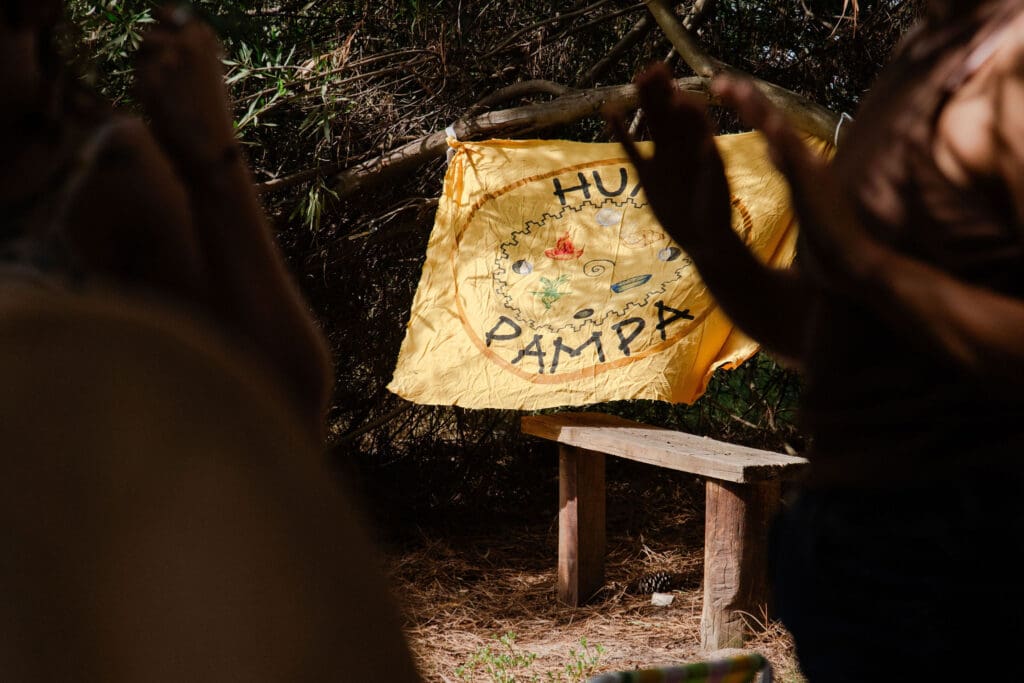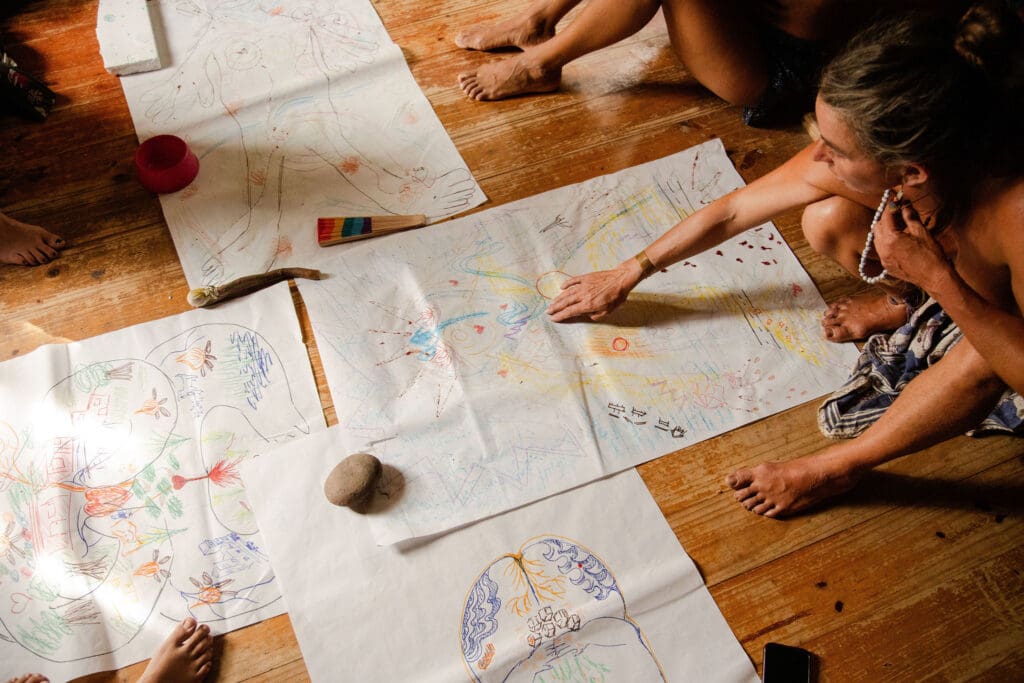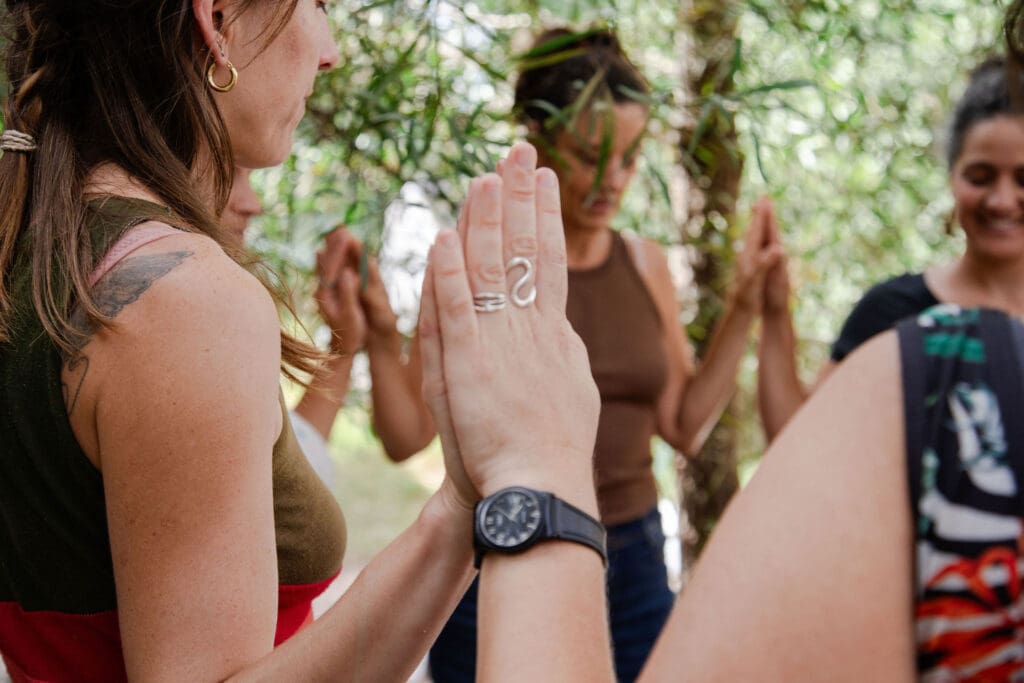Photos by Val Rodlez

The Hum Pampa community is a group of women descended from the Indigenous Charrúa nation (which once inhabited what is now Uruguay, as well as parts of western Argentina and southern Brazil). It is a decentralized collective spread across the country, with members living in various towns and departments, primarily in rural and peripheral areas. From these locations and their unique social fabrics, they work to recover and keep alive the memories of their lineages and ancestors through the practice of rituals and the exchange of knowledge in natural medicine.

On Saturday, February 22, we met with members of the Hum Pampa collective at the Las Vegas resort, in the Department of Canelones, Uruguay. The first thing we asked about was the curious name of the place. It turns out there are several stories. Some refer to gambling and games of chance, where supposedly the region came about as the result of a “lucky bet,” in which someone won a piece of land through gambling. However, we preferred the other version, where “vegas” refers to natural formations along the banks of the stream that flows into the Río de la Plata. This formation has a clay-like consistency and is generally dark in color.
The group told us that when working the land—like in their vegetable gardens—they quickly come upon dense, heavy, clay-rich soil. Their land is enriched by these “vegas.” One member of the group shared how she used to play with this clay sand during her childhood vacations on the beach at the resort.

At this curiously named resort, we arrived at a lovely house made of wood and mud, where Paula and her daughter live. They kindly opened their home so we could meet with the ORA project team and other members of the Hum Pampa collective and spend the day together.
We were received by the Hum Pampa in a very special way. Among the smoke of incense, deep gazes, and birdsong, they performed a body cleansing and a circular welcoming ritual. Among the trees surrounding the place, the wood and mud house seemed even more enchanted, and the day began with a different kind of attunement and harmony among us all.
During the gathering, we invited them to draw their body-territories. We were interested in hearing how they resist and inhabit their territories—from personal experiences to collective stories. The activity allowed us to share their worldviews and ways of being.
They shared that part of their struggle is resisting in a territory that denies Indigenous memory. The colonial and patriarchal wound has shaped the image of a country “without Indigenous people,” founded by European migration—a narrative that still persists today. The bodies and voices of these women insistently declare that they are alive, that their ancestors resisted the persecution of the nation-state. They seek to reconnect the threads between past and present, listening to those who came before them and carrying their lives forward in deep connection with the land they inhabit.
Some of them work the land through agroecology; others are park rangers; some create natural medicines from plants; others work with children. In dialogue with community organizations, they organize against extractivism and agribusiness. They are deeply concerned with defending water, native forests, and the balance in the relationship between humans and non-human beings. They weave together to sustain their territories.

The day ended with a circular dance, guided by the rhythm of the drum and a song in the Charrúa language, inviting us into a trance-like farewell.
Watch our video:
About The Authors
We are Lorena Rodríguez Lezica, Gabriela Veras Iglesias, Nat Tommasino Comeseña, and Alicia Migliaro González, from Uruguay, and this work has been carried out in dialogue with the collective Critical Views of Territory from Feminism. The four of us in Uruguay have been walking together through university outreach and as social activists. In this project, we come together to support four different community experiences in various regions of Uruguay.
This narrative is a collective creation of Lorena, Gabriela, Nat and Alicia, who organized the meetings and workshops within the framework of ORA.



